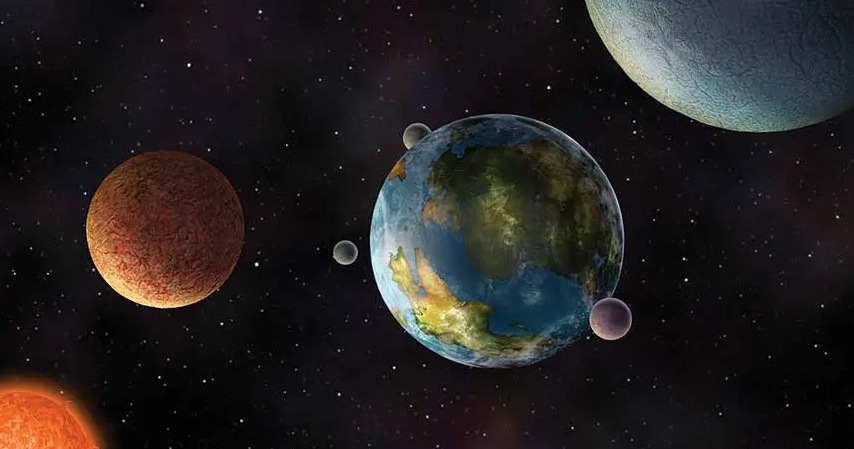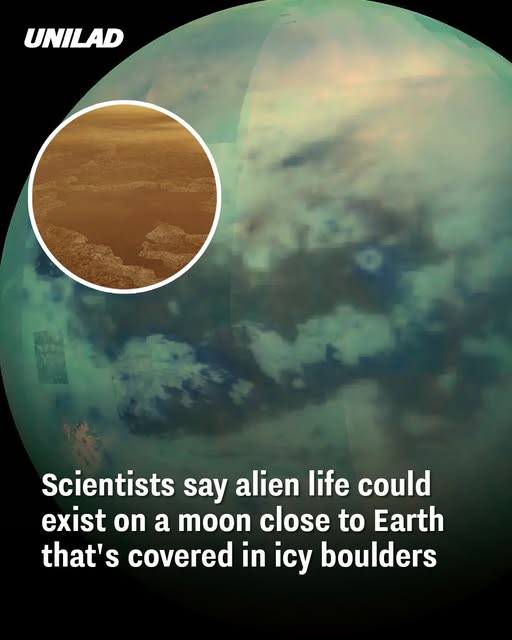Saturn’s largest moon, Titan, has long intrigued scientists due to its unique characteristics and potential to harbor life. Recent studies have delved into the possibility of life existing in Titan’s subsurface ocean, focusing on its organic chemistry and environmental conditions.
Titan’s Unique Environment
Titan stands out in our solar system as the only moon with a dense atmosphere, primarily composed of nitrogen and methane. Its surface features lakes, rivers, and seas of liquid methane and ethane, creating a landscape reminiscent of Earth’s, albeit under much colder conditions, with surface temperatures averaging around -179.2°C. Beneath this icy exterior lies a vast subsurface ocean, making Titan a subject of interest in the search for
The Role of Organic Molecules
The moon’s thick atmosphere is rich in organic compounds, including hydrogen cyanide (HCN) and acrylonitrile. HCN is considered a potential precursor to amino acids and nucleic acids, essential components for life. Studies suggest that HCN can polymerize to form polyimine, a compound capable of absorbing sunlight and potentially facilitating prebiotic chemistry even in Titan’s frigid environment. Acrylonitrile, on the other hand, has been detected in Titan’s atmosphere and is believed to form stable structures akin to cell membranes, known as azotosomes. These structures could theoretically function in liquid methane, offering a parallel to Earth’s lipid-based cell membranes that operate in water.
 Fermentation as a Potential Energy Source
Fermentation as a Potential Energy Source
A recent study published in The Planetary Science Journal explored the viability of glycine fermentation in Titan’s subsurface ocean. Glycine, the simplest amino acid, is relatively abundant in primordial matter throughout the solar system. Researchers investigated whether microorganisms could utilize glycine fermentation as an energy source in Titan’s ocean. Their findings suggest that, under certain conditions, Titan’s ocean could support chemical processes allowing energy extraction from glycine fermentation. However, the potential biomass resulting from such processes would be minimal, likely only a few kilograms scattered throughout the vast ocean, posing significant challenges for detection.
Challenges in Detecting Life
Detecting such sparse life forms presents considerable difficulties. The limited interaction between Titan’s surface organics and its internal ocean further complicates the potential for life. While the surface is rich in organic molecules, the extent to which these compounds mix with the subsurface ocean remains uncertain. This limited exchange suggests that even if life exists, it would be in isolated pockets, making detection efforts more complex.
Future Exploration: NASA’s Dragonfly Mission
To further investigate Titan’s potential habitability, NASA has planned the Dragonfly mission, scheduled for launch no earlier than July 2028. This ambitious mission aims to deploy a rotorcraft lander to explore Titan’s diverse environments, analyze surface composition, and search for biosignatures. Dragonfly will provide critical data to assess the moon’s prebiotic chemistry and its capacity to support life.

Implications for Astrobiology
The exploration of Titan holds significant implications for our understanding of life’s potential beyond Earth. The presence of complex organic molecules, liquid hydrocarbon lakes, and a subsurface ocean suggests that life could arise in environments vastly different from our own. Studying Titan’s unique chemistry and potential biosignatures will not only inform the search for extraterrestrial life but also enhance our comprehension of the diverse conditions under which life can emerge.
Conclusion
In conclusion, while the existence of life on Titan remains speculative, ongoing research and upcoming missions like Dragonfly continue to shed light on this enigmatic moon’s potential to harbor life. The challenges are substantial, but the scientific rewards could profoundly impact our understanding of life’s universality.

















